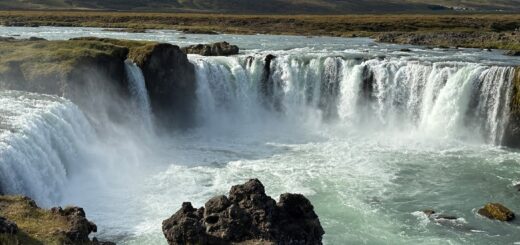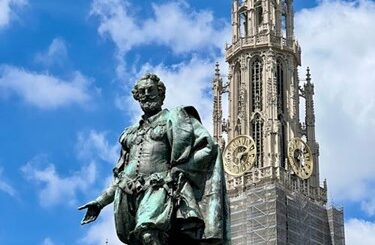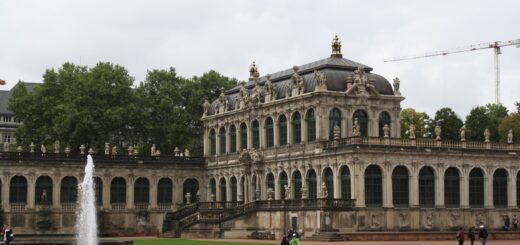Seville
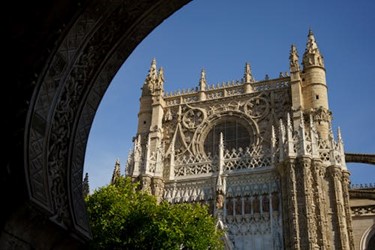
Travel advice for Seniors: Seville
Our trip to Seville was perfectly timed to see the sunset and evening stars over the incredible Catedral de Sevilla.
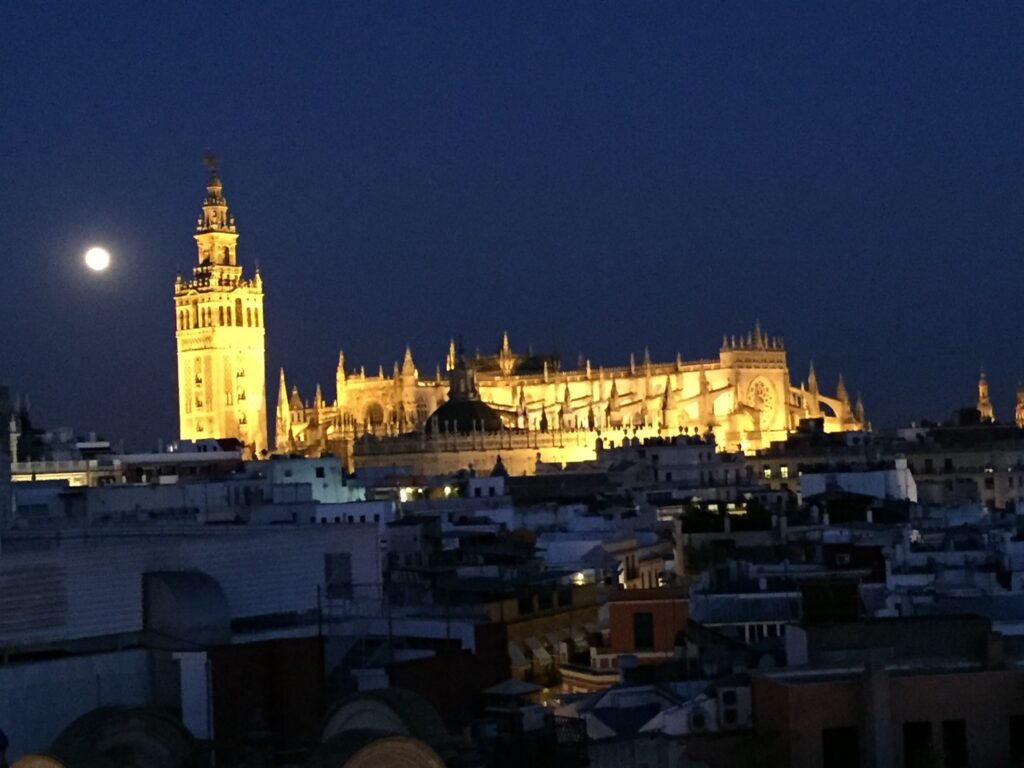
Seville was originally founded as a Roman city centuries ago, followed by Visigoth, Moorish, and Spanish rule. It was the center of the Spanish economy following the discovery of the Americas by Christopher Columbus.
Now the capital of Andalusia and the province of Seville, it is home to three UNESCO World Heritage Sites and is world-renowned for its monuments, architecture, flamenco dancing and of course, tapas!
First stop was the Plaza de España. Built in 1928 for the Ibero-American Exposition of 1929, you can witness the melding of Baroque Revival, Renaissance Revival and Moorish Revival styles of Spanish architecture. You may recognize it from the many film scenes shot here, Star Wars II and Lawrence of Arabia to name a few. The plaza has accessible ramps and walkways, but there are some steps.
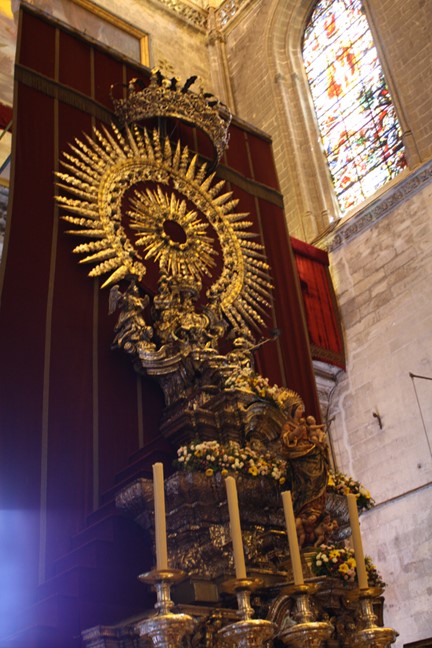
The main attraction is the UNESCO Heritage Site, Catedral de Sevilla, or Cathedral of Seville. The cathedral is home to the tomb of Christopher Columbus and the bell tower, La Giralda, which was originally the minaret of an Almohad mosque. Also known as the Cathedral of Saint Mary of the See, it is largest gothic cathedral in the world. The exterior of the cathedral is magnificent, and the interior was awe-inspiring. Accessible ramps and interior.
Barrio de Santa Cruz is the historic heart of the city. The city’s tourist mecca, Santa Cruz is home to Seville Cathedral and the Royal Alcazar as well as the old Jewish Quarter with its narrow streets, populated by the Jewish prior to the Inquisition of the 1500’s. Many tapas shops and shops selling souvenirs, handicrafts and ceramics are nearby the main attractions.
A word about tapas…we took the opportunity to sit in the main square (luck was with us) and listen to some live music featured during the festival. We made sure to order the regional specialty, Jamón Ibérico or Iberian ham with crusty bread, which was as good and uniquely flavored as advertised. We also ordered a few different types of tapas, which are plated small bites of various hors d oeuvres. These small bites can be deceivingly filling and deceivingly expensive. It’s easy to over-order because they all sound so delicious. Before you know it, you’ve spent a small fortune!
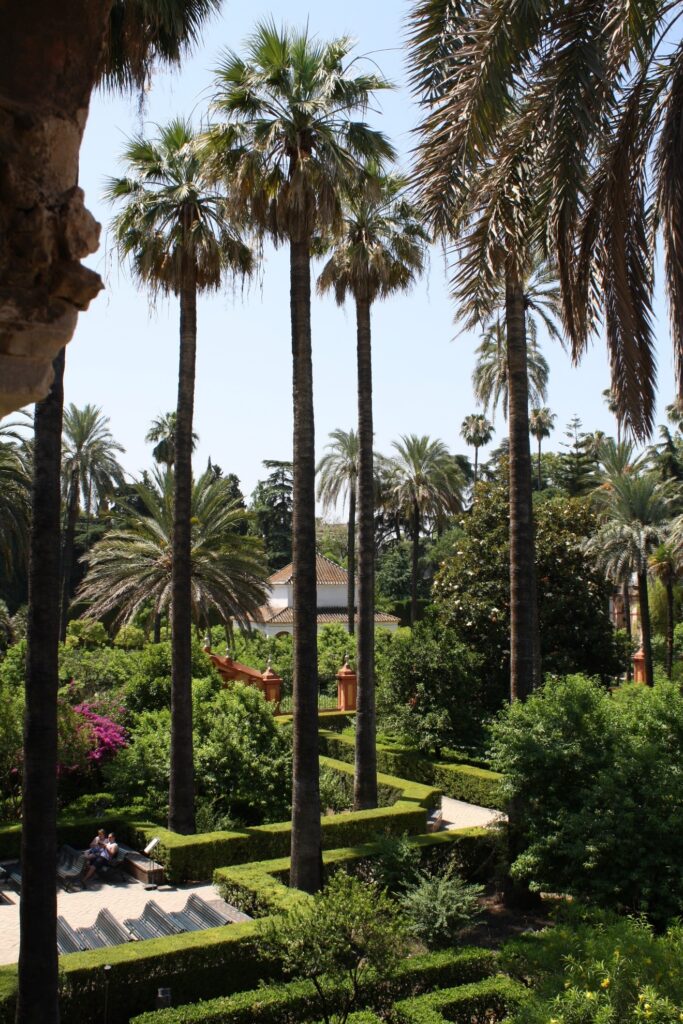
Earlier in the day we visited a second UNESCO Heritage Site, the Royal Alcázar of Seville. Built in 913 by the Umayyad Caliphate as an Islamic-era citadel, the Alcázar is a palace with gardens that feature Arab, Renaissance, and modern styles that has been updated and added on to over the years. It is the oldest royal palace in Europe that is still in use today. Plan on spending a couple of hours here. Be sure to see the Ambassador’s Hall, the Royal Bedchamber and the many courtyards and gardens. Accessible ramps, elevator and restroom, though there are a lot of steps.
A bit of trivia for you…the Royal Alcázar was also the filming set of “Game of Thrones” as the kingdom of Dorne.
We didn’t visit the third UNESCO World Heritage Site, the Archivo de Indias or Archive of the Indies, but I’m sure it would’ve been fascinating. The building holds records back through Seville’s history of exploration including letters from Christopher Columbus and documents from the Spanish colonial period including treaties and maps.Accessible entrance, elevator and restrooms, though no accessible parking.
For Seville, note that a lot of the streets are cobbled and some of the streets are very narrow. The Seville Cathedral has a wheelchair accessible entrance, ramps, and smooth surfaces. The cathedral also offers free wheelchairs and sign guides for visitors with reduced mobility.
Seville was an exciting stop because of the awe-inspiring UNESCO Sites, the interesting history and the general atmosphere. I would’ve liked to have spent more time here exploring the Archives of the Indies to learn about Spain’s history, which is so different from the rest of Europe. It would’ve been nice to have spent more than one day, but it was a whirlwind tour of Spain, so on we go!
Where we stayed: Hotel Inglaterra. Nice accommodation, breakfast included. Very conveniently located with a lovely rooftop balcony overseeing the city. Highly recommend for the views.Accessible elevator, parking and common areas.
How we got there: After a stop at Cordoba, it was about six hours total from Madrid to Seville. This was part of a 14-day small group tour through Spain, starting in Madrid and ending in Barcelona.
General Accessibility Information: See notes above. Major tourist sights, newer hotels, transportation in most major cities are accessible. Visitors can get accessibility support and information through Spain Is Accessible. Call in advance to verify and make specialty arrangements. See our sections on specialty apps and accessible travel for more on accessibility assistance.

